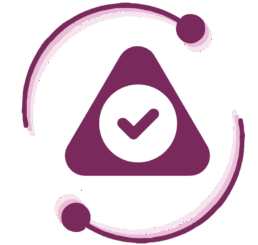Globalization and digital transformation have dramatically expanded business networks, leading organizations to rely on third-party vendors, suppliers, contractors, and partners more than ever before. Modern companies operate within intricate webs of external relationships – these partnerships drive efficiency and innovation, but they also expose organizations to hidden threats. In an interconnected economy, a single vendor can have a ripple effect across multiple countries and tiers of subcontractors, especially as cloud services and outsourced processes are vital in core operations.
Globalization and digital transformation have dramatically expanded business networks, leading organizations to rely on third-party vendors, suppliers, contractors, and partners more than ever before. Modern companies operate within intricate webs of external relationships – these partnerships drive efficiency and innovation, but they also expose organizations to hidden threats. In an interconnected economy, a single vendor can have a ripple effect across multiple countries and tiers of subcontractors, especially as cloud services and outsourced processes are vital in core operations.

This growing reliance on third-parties brings significant risks. Poorly vetted partners may introduce operational disruptions (e.g. a supplier’s failure halting your production line) or trigger compliance failures that rebound onto your company. Even more alarming, a third-party’s misstep can inflict serious reputational damage on your organization – tarnishing your brand by association. Third-party risk can manifest in many forms, from data breaches caused by vendors to financial losses if key suppliers become insolvent. As third-party ecosystems expand, businesses must recognize the vulnerabilities and risks that come with such partnerships and act accordingly.
The Necessity of Comprehensive Third-Party Screening
In today’s regulatory climate, comprehensive third-party screening is considered standard business practice. Anti-corruption laws like the U.S. Foreign Corrupt Practices Act (FCPA) and the UK Bribery Act 2010 hold companies accountable for the actions of their third-party agents. Both laws expressly prohibit corrupt payments made through intermediaries, meaning a company can face liability even if an overseas agent or consultant pays bribes on its behalf. In one recent case, an American specialty chemicals manufacturing company paid over $218 million to settle FCPA charges after its third-party intermediaries were found to have bribed foreign officials. Even though the company lacked direct knowledge of the bribes, it was still held liable under the FCPA for failing to implement adequate internal controls. The UK Bribery Act imposes similar expectations where companies can be penalized if associated persons bribe on their behalf, unless the company can show “adequate procedures” were in place to prevent wrongdoing. There are severe legal consequences of non-compliance under the FCPA, with corporate fines reaching up to $2 million per violation, and individual executives facing hefty fines and even prison time for willful violations. Clearly, regulatory compliance demands rigorous vetting of third-parties to avoid crippling penalties and criminal sanctions.
Robust third-party screening is imperative for protecting organizational reputation and financial health. Business leaders know that trust and integrity are hard-won and easily lost. A single vendor’s scandal can tarnish your brand in the public eye, cause customers to lose confidence, and even send stock values tumbling. For example, supply chain disruptions or ethical lapses by a supplier can quickly become frontpage news, associating your company with the problem. One industry survey found that 43% of organizations experienced a financial loss in the past year due to supply chain risks – often these losses come with a side of reputational fallout. Regulators and stakeholders expect companies to conduct due diligence on their supply chains (including environmental, social, and governance factors) to preempt such issues. Enterprises that fall short in screening and monitoring third-parties may face significant fines, loss of business, investigation costs, and long term brand damage.
Key Components of Effective Third-Party Screening
Establishing an effective third-party screening program involves multiple components working together. The following are key elements that compliance officers and procurement teams should incorporate:

Risk-Based Assessments
Not all third-party relationships carry equal risk, so due diligence should be risk-driven and proportional. Leading practices call for tailoring the depth of screening based on factors such as the third-party’s industry sector, the geographic regions involved, and the level of access to systems or data that the vendor will have. For instance, a vendor handling sensitive customer data or operating in a high risk country warrants deeper scrutiny than a low risk supplier. A risk based framework might classify vendors into tiers (high, medium, low risk) and focus more on higher risk tiers. By focusing resources where the potential impact is greatest, companies can efficiently mitigate the most critical third-party risks.

Continuous Due Diligence and Monitoring
Effective third-party screening begins at onboarding and must continue throughout the entire vendor relationship. Risks can evolve over time as businesses and environments change. Companies should implement continuous monitoring throughout the duration of the third-party relationship. This means conducting regular reviews and audits (e.g. annual risk reassessments, periodic security audits, financial health checks) to catch emerging issues before they cause harm. Continuous monitoring also involves watching for red flags in real time, for example; alerts for regulatory changes, negative news about the vendor, data breaches, or other events that could raise the vendor’s risk profile. A living, continuous practice of due diligence allows organizations to detect and address problems early, instead of limiting checks to the onboarding stage.

Advanced Screening Tools and Data
The sheer scale and complexity of third-party networks today demand the use of modern tools and databases to improve accuracy and efficiency. Manual spreadsheets and basic checklists are no longer sufficient. Companies are increasingly leveraging specialized screening technologies – for example, automated solutions that pull together risk intelligence reports on a vendor’s cybersecurity ratings, financial stability, legal compliance record, and reputational standing. Sophisticated compliance databases can quickly flag if a prospective partner appears on global sanctions lists or has a history of lawsuits, fraud, or adverse media mentions. Implementing these tools (often powered by AI and big data) helps compliance teams conduct thorough background checks faster and with greater consistency. Automation can also streamline repetitive tasks, for instance; workflows that automatically calculate inherent risk scores or trigger reassessments when certain risk factors change.
Need deeper visibility into third-party risk?
D&B Risk Analytics delivers continuous, AI-driven, Data Cloud-powered risk intelligence, with 600M+ Global Business Records and 2B+ updates annually. From dynamic risk scores to early-warning alerts, it empowers your team to detect vulnerabilities, monitor regulatory changes, and act with confidence – before issues escalate.

Challenges in Implementing Third-Party Screening
Implementing a rigorous third-party screening program is not without its challenges. Organizations often encounter several hurdles that must be addressed to ensure the screening process is effective and sustainable:

Cost and Resource Limitations
Thorough third-party due diligence can be resource intensive – it requires skilled personnel, time, and often expensive data sources or tools. Many companies, especially smaller firms, struggle to allocate sufficient budget and staff for a comprehensive screening program. Even large enterprises face scalability issues as their vendor list grows into the hundreds or thousands. Reviewing each third-party’s credentials, compliance, and risks on an ongoing basis can overwhelm teams that are already stretched thin. Finding the right balance between thoroughness and practical feasibility is a constant challenge, and organizations must often make hard choices about where to focus their limited compliance resources.

Data Privacy Laws and Information Access
In an era of stringent data protection regulations, gathering information on third-parties has become more complex. Laws like the EU General Data Protection Regulation (GDPR) place limits on sharing personal data, which affects how companies can vet individuals and entities. Compliance teams must ensure that their screening processes (for example, checking a third-party’s owners or directors against criminal databases) respect privacy laws and consent requirements – a task that can slow down or restrict due diligence efforts. On the other side, companies often encounter difficulty obtaining accurate data about potential vendors or agents. Some third-parties may be reluctant to share proprietary details about their security controls, financial statements, or subcontractors. Others might not maintain up to date documentation, or operate in countries where public records are limited. This lack of transparency from third-parties can create blind spots in the screening process. Navigating privacy constraints while trying to collect reliable, timely information is a delicate balancing act for compliance officers.

Complex and Evolving Third-Party Ecosystems
The very nature of modern supply chains and vendor networks adds complexity to third-party screening. Companies today might have hundreds or even thousands of third-party relationships, often across multiple regions. These third-parties, in turn, may rely on their own network of subcontractors and suppliers, creating multilayered supply chains. Managing risk in such a diverse ecosystem is challenging – a risk can originate at any tier (as seen in notorious incidents where a breach at a fourth tier supplier led to a major data compromise). Moreover, the third-party landscape is not static; it’s continually evolving as new vendors onboard, others offboard, and business models change. Keeping an up to date inventory of all third-parties and continuously assessing each one’s risk is a formidable task in itself. Geographic spread adds another layer of difficulty; a company might need to comply with a patchwork of regulations across different jurisdictions, and monitor geopolitical or market changes that could impact vendors in far flung locations.
Best Practices for Strengthening Screening Processes
To bolster your third-party screening efforts, consider the following best practices adopted by leading organizations:

Centralized Third-Party Management
Implement a centralized system or repository for all third-party information and risk assessments. Rather than having each department manage vendors in silos, a centralized third-party management platform (or vendor risk management software) provides a single source of truth for tracking due diligence activities, contracts, and risk ratings. This improves visibility and consistency – for example, maintaining a complete, up to date inventory of every third-party relationship and the status of its latest review. Centralization ensures that no vendor falls through the cracks and allows leadership to get an enterprise wide view of third-party risk at any time.

Cross Functional Collaboration
Break down silos and involve all relevant stakeholders in the screening and management process. Compliance or procurement might lead the effort, but input from other teams is crucial. Best in class programs engage procurement, legal, compliance, finance, IT/security, and business unit leaders in a coordinated framework. Each function brings a different lens – for instance, IT can evaluate cyber risks while legal checks contract clauses and regulatory issues. By establishing clear roles and responsibilities (often through a formal third-party risk committee or working group), organizations ensure that third-party vetting is comprehensive and aligned with enterprise objectives. Cross functional involvement also fosters a shared sense of accountability and risk awareness across the organization.

Training and Awareness
Invest in regular training and awareness programs to cultivate a risk conscious culture among employees. Remember that third-party risk management is not solely the job of the compliance team – employees who select, onboard, or manage vendors (and even those interacting with contractors on a day to day basis) should be educated on their role in mitigating third-party risks. Effective third-party risk management initiatives often include staff training to underscore why screening matters and how to spot potential red flags. By incorporating third-party risk topics into your compliance training curriculum (covering areas like how to conduct due diligence, data privacy expectations, recognizing signs of vendor noncompliance, etc.), you empower your workforce to serve as the first line of defense.
Stronger screening starts at vendor selection.
D&B Vend-R helps you assess suppliers upfront with data-driven insights into financial health, risk exposure, and compliance history—making it easier to onboard reliable partners and avoid costly blind spots.

By implementing these best practices – centralizing your third-party oversight, encouraging cross functional partnership in risk management, and continuously educating your team – your organization can significantly enhance its third-party screening program. Ultimately, mitigating the hidden risks in your extended enterprise is an ongoing journey. It requires commitment from the top, robust processes and tools, and a culture that prioritizes due diligence.



